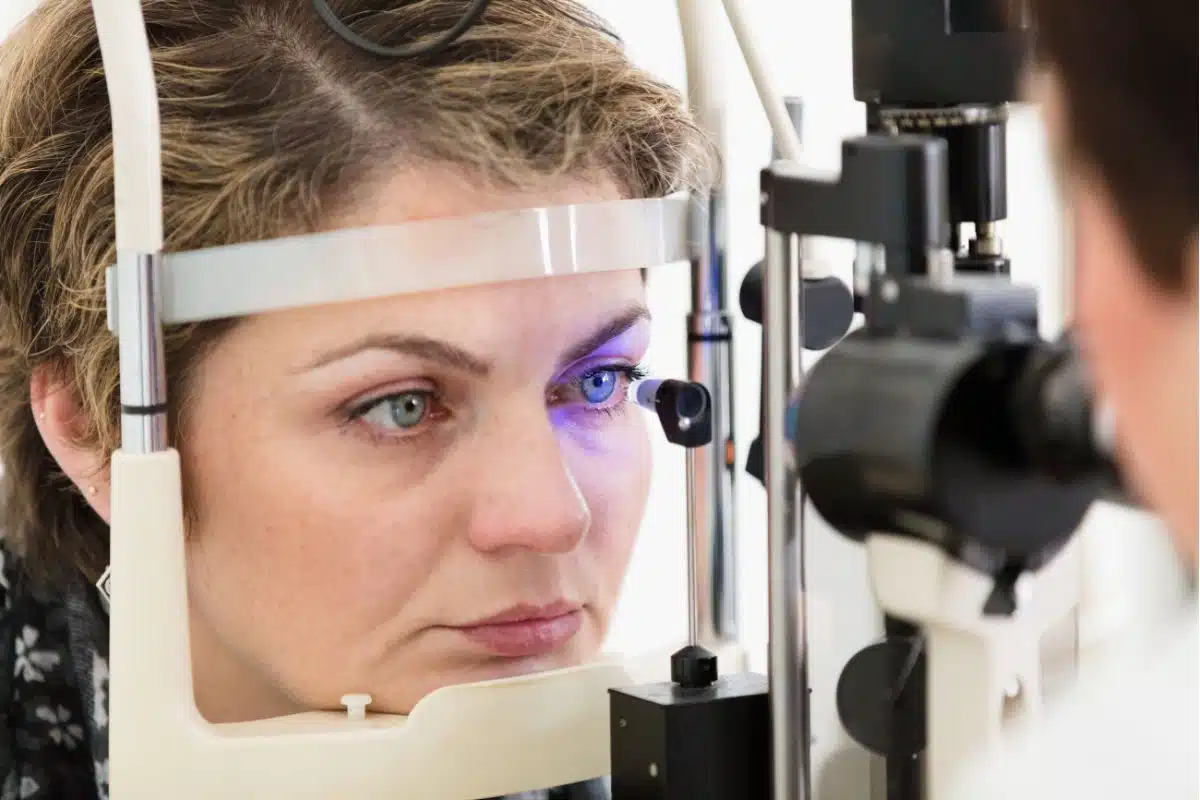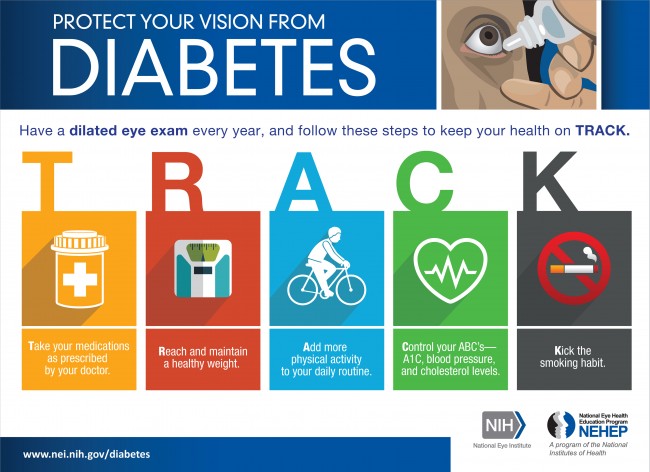
November is Diabetic Eye Disease Awareness Month, a time to bring attention to the connection between diabetes and the eyes. Of all the data and research that link the two, one message is crystal clear: vision loss due to diabetes can be prevented. The Center for Disease Control estimates that over 90 percent of diabetes-related vision loss could be prevented with early detection during a diabetic eye exam.
If you or someone you know has diabetes, November is a great month for an eye examination. The doctors at Berkeley Eye Center are professionally trained to detect early-onset diabetic eye disease. Take a moment to learn about the link between this disease and vision loss, and call your Berkeley Eye Center location to schedule an appointment.
Diabetes and Vision Loss
Diabetes is a disease that affects the body’s ability to control blood sugar levels. The most commonly affected organs include the heart and kidneys, but don’t rule out your eyes. Diabetes changes the blood vessels in your retinas, causing them to swell, leak or even close off completely.
The most common types of diabetic eye disorders are:
Diabetic Retinopathy
The most common diabetic eye disease is called Diabetic Retinopathy. Changes to the blood vessels in the retina usually affect both eyes, and could result in vision loss that is irreparable.
Diabetic Retinopathy comes in two forms. Both types can be screened and treated at Berkeley Eye Center.
- Non-proliferative Diabetic Retinopathy (NPDR). Many people with diabetes have a mild form of NPDR that may not affect their vision. Untreated NPDR can result in macular edema and macular ischemia. Blurred vision is the most common symptom, but NPDR can be difficult to detect without a diabetic eye exam.
- Proliferative Diabetic Retinopathy (PDR). When the blood vessels in the retina leak and prevent proper blood flow, the retina responds with new, abnormal vessels that can create scar tissue. The result can be severe, including vision loss and detached retina.
Even without diagnosed retinopathy, swift changes in blood sugar levels can cause blurry vision. These changes often dissipate once sugar levels normalize.
Diabetic Macular Edema (DME)
Caused by diabetic retinopathy, diabetic macular edema is a swelling in the area of the retina called the macula. The macula is the part of the retina that is important for the sharp, straight-ahead vision necessary for reading, recognizing faces, and driving.
Almost half of all people with diabetic retinopathy will develop DME.
Cataracts
Blurry vision from blood sugar spikes does have a link to cataracts. Cloudy vision can become permanent and lead to cataract surgery to replace the damaged lens with a plastic or silicone alternative. This replacement lens, called an intraocular lens, allows light to pass through so your retina can focus.
Recovery from cataract surgery involves reduced activity and using eye drops. Most of our cataract patients are seeing better within the first week of the procedure.
Stay on TRACK to Protect Your Vision
The fact that diabetes-related eye conditions often have no early symptoms is why it’s so important for people with diabetes to get a comprehensive dilated eye examination at least once a year. Early diagnosis and treatment are the keys to preventing vision loss and blindness.
In addition to a regular comprehensive diabetic eye exam, it’s important for people with diabetes to maintain a healthy lifestyle to preserve their vision. The National Eye Institute has put together a list of recommendations to help people with diabetes stay on “TRACK” to prevent a diabetic eye disease:
- Take your medications as prescribed by your doctor.
- Reach and maintain a healthy weight.
- Add more physical activity to your daily routine.
- Control your ABCs — A1C, blood pressure and cholesterol levels.
- Kick the smoking habit.

Promising new treatments have been developed for diabetic eye disease. These include photocoagulation laser treatments, anti-angiogenic drug therapy and intravitreal steroids. Unfortunately, only about half the people with diabetes get an annual comprehensive dilated eye exam. These examinations are crucial for detecting diabetic eye disease during the earliest stages, when they are the most treatable.
Prevention is Key
Treating diabetic eye disease is easiest when the symptoms are caught early. As a diabetic patient, you are predisposed to eye disease, but vision loss can be avoided with early detection. Here are five ways to stay ahead of diabetic eye disease.
1. Routine Eye Exams. In the early stages, diabetic eye disease has no symptoms. Only an eye exam performed by an optometrist can catch the changes before they damage your vision. We recommend eye exams once per calendar year. Most insurance companies cover a yearly eye exam.
2. Control your blood sugar. Each time your blood sugar spikes, the blood vessels in your eyes change. This alteration of the lens shape can lead to blurry vision. Over time, repeated sugar spikes can cause permanent damage. Control your blood sugar to protect your body and your eyes.
3. Maintain healthy blood pressure. High blood pressure creates a higher risk for eye disease and vision loss. Check your blood pressure each week and have your family doctor treat high blood pressure problems.
4. Exercise. Routine exercise keeps your eyes healthy too! Exercise is good for diabetes and blood pressure control. Managing your body’s health, eyes included, means staying active. Daily walks or time spent in the gym, whatever activity you choose – keep your body moving.
5. Eat Well. Treat your body well by eating good, wholesome foods. This also means staying away from habits that destroy our bodies – like alcohol and tobacco. Smoking increases your risk for diabetic eye disease by making blood pressure and diabetes harder to control.
Schedule a Diabetic Eye Exam Today
November is the time to take control of your eyes. Maintaining a healthy lifestyle, taking your medications and getting regular comprehensive eye exams are the most effective ways to control and prevent diabetic eye disease.
Vision loss from diabetic eye disease can be prevented, and Berkeley Eye Center wants to help. We have extensive experience in treating patients with diabetes-related eye problems and utilize the latest techniques and technology for treating eye conditions caused by diabetes.
If you or a family member has diabetes and it’s been more than a year since your last eye exam, we encourage you to call Berkeley Eye Center and schedule a comprehensive eye exam. With more than 25 clinics and optical locations located throughout the greater Houston area, it’s a good chance there’s a Berkeley Eye Center of Houston near you.
